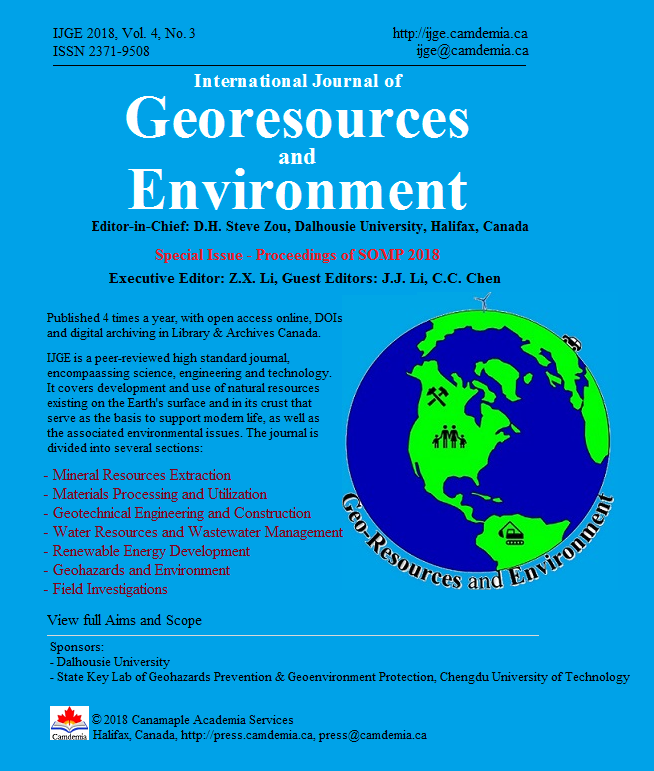Investigation of Effects of Nanobubbles on Phosphate Ore Flotation
DOI:
https://doi.org/10.15273/ijge.2018.03.022Keywords:
attachment, bubble size, cavitation, collision, nanobubble, phosphateAbstract
Phosphorous is vital for life, including plants, animals, and human beings and it is an essential component in agricultural fertilizers and phosphorous-based chemicals. Phosphate ores, mainly in the form of apatite and collophanite, are non-renewable natural resources of phosphorus. Froth flotation has been used in the phosphate industry for more than half a century as the primary technique for upgrading phosphate. Nevertheless, flotation does not produce satisfactory performance for phosphate beneficiation in many cases, especially for very fine and coarse phosphate particles. This study was performed with an aim to develop a nanobubble enhanced flotation process to enhance phosphate flotation efficiency. A specially designed flotation column featured with a nanobubble generator and a conventional bubble generator was employed to assess the effects of nanobubbles on the phosphate ore flotation performance under different operating conditions. Flotation process parameters investigated include feed flow rate, dosage of collector, dosage of frother, flotation time, etc. The flotation results have shown that use of nanobubbles increased P2O5 recovery by up to 30% for a given Acid Insoluble (A.I.) rejection, depending on phosphate concentrate grade. Nanobubbles reduced the collector and frother dosage by about 50% and also increased flotation kinetics. The improved flotation performance can be attributed to increased collection efficiency and surface hydrophobicity in the presence of nanobubbles.Downloads
Published
Issue
Section
License
Copyright, Terms and Conditions
The International Journal of Geohazards and Environment (the Journal) is published by Canamaple Academia Services (the Publisher) online with open access, under a Creative Commons Attribution-Noncommercial license (CC-BY-NC) (http://creativecommons.org/licenses/by-nc/4.0/). Authors (the Authors) submitting papers (the Work) for publication in the Journal automatically agree to the following terms and conditions.
1. Under the license (CC-BY-NC), Authors give permission for others to share and reuse the Work, as long as the original source and author(s) are properly cited (i.e. a complete bibliographic citation and link to the Journal website) and the material is not used for commercial purposes. Any sharing or reuse must however indicate the original CC-BY-NC license terms of the work.
2. Authors transfer and assign to the Publisher all copyright in and to the Work. However Authors retain all proprietary rights except the copyright, related to the Work and also retain the rights a) to use, reproduce, distribute, and publicly display the Work in any medium in connection with the Authors‘ academic and professional activities, such as teaching, presentations and lectures, b) to create derivative works from the Work and to make full use of the Work in future research and publications, c) to authorize others to make any non-commercial use of the Work, d) to make both the pre-published and final-published versions available online in institutional and/or disciplinary repositories or on their own websites with a citation and link to the original paper published in the Journal.
3. Authors warrant that the Work is their original work, it is not copied from anywhere or anyone else, they are totally responsible for the authenticity, originality, validity and accuracy, and the facts and views are their own, that the Work contains no matter which is defamatory or infringes any literary or proprietary rights, intellectual property rights, or any rights of privacy, and that the Work has not been simultaneously submitted to any other journals or publishers. Authors further agree that their manuscripts whether accepted or rejected will not be returned and the rejected manuscripts will be disposed at the journal editor's discretion.
Disclaimer: The Publisher, the Journal and the editors accept no responsibility for statements or opinions expressed by authors. Use of information and materials in the Journal is the sole responsibility of users.


